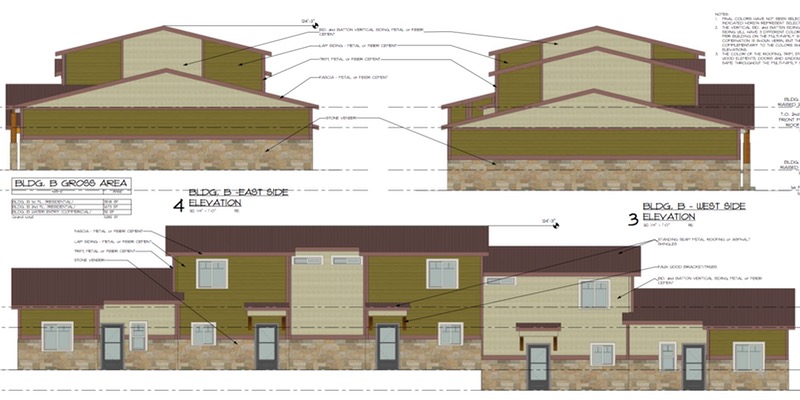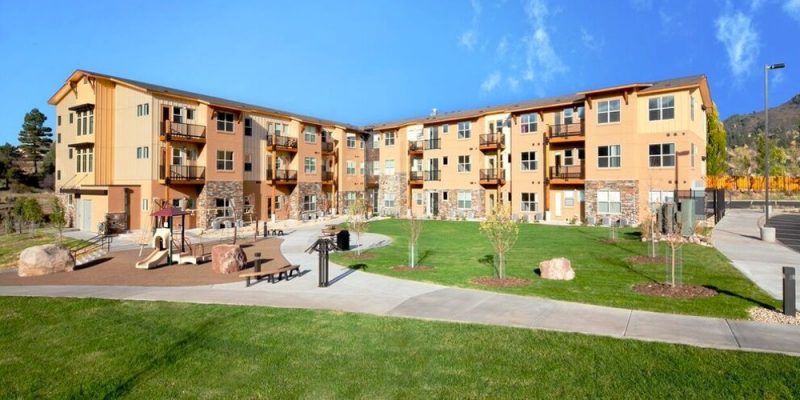I suggested last week, in Part Two of this editorial series, that “we’ve created a town that discourages property taxes.” I’d like expand a bit on that statement, with the next couple of installments in this editorial series.
I truly appreciate the work of groups like ‘Strong Towns’, and insightful writers like its president and founder, Chuck Marohn, who posted a MarketWatch op-ed earlier this month, characterizing government-subsidized community growth, as its often practiced in American communities, as a “Ponzi scheme”.
After reflecting on his essay, and writing about how his ideas might apply here in Archuleta County, I paid a visit to the Strong Towns website to see if I could find more information about that topic, and I noticed a podcast discussing the decision, in California, to repeal TIF-funded (Tax Increment Financing-funded) urban renewal… and recent proposals to bring California’s “Redevelopment Agencies” back, after they were made illegal in 2012.
“Should California Bring Back Redevelopment Agencies?”
As I mentioned in an editorial last September, the clever financial scheme for using “future” tax money to fund current urban renewal projects — TIF financing — was invented in California back in the 1950s, when the federal government was offering matching grants for housing and economic development following World War II. The government entities created in California known as “RDAs” — Re-Development Authorities — provided a legal way for cities to divert TIF revenues collected by surrounding jurisdictions.
By 2008, RDAs were diverting 12 percent of all the property taxes collected in California to economic development projects, putting significant pressures on school funding in particular. But that same year, the financial challenges created by the Great Recession caused the state government to begin discussing ways to get rid of TIF financing — partly to allow the state to balance its own (out-of-control) budget. During a special legislative session in 2011, the state legislators passed ABX1-26, dissolving all the RDAs in California. It took a ruling by the California Supreme Court to allow the dissolution to actually proceed.
The podcast I found on the Strong Towns website included, starting about halfway through, a debate between two California activists — Mike Madrid and Steven Greenhut — with Mr. Madrid predicting that TIF financing will eventually make a comeback in California in one form or another, because it’s one of the few financial tools available for creating affordable housing. As our readers may be aware, the housing crisis in California is, to use Mr. Madrid’s word, “extraordinary.”
Mr. Greenhut argued, meanwhile, that the numerous abuses that arose from past TIF financing schemes in California disqualify RDAs as a reasonable method for addressing problems left unaddressed by the (supposedly ‘free’) market.
Chuck Marohn was acting as moderator for the debate, and at one point he asked about the downtown properties where landlords are “running buildings into the ground” while hoping for government incentives to come to the rescue. “Are there other mechanisms at local communities’ disposal? To allow them to get properties — and I’m going to broaden it beyond ‘blight’ to say: ‘unstuck’?” Are there other such mechanisms…that perhaps don’t involve taxpayer subsidies?
Mr. Greenhut responded: “Well, yeah. It’s called, ‘Letting people do stuff.’ I mean, I have fixed up properties myself, in a very small way; I own just a handful of properties in older cities. And you know how hard it is. Cities are not your friend! There is so much that can happen [without needing subsidies.]…”
…If only cities were our friends…
Anyone who has tried to build a new structure or expand an existing structure in downtown Pagosa has become familiar with the Town’s Land Use and Development Code (LUDC), which is chock full of rules about what can and cannot be built in Pagosa Springs. Over the past three decades especially, the Town government has come to the conclusion that property owners — left to their own devices — would build shoddy, unsafe, unattractive homes and commercial spaces… buildings that would be too tall, or too basic, or too close together, or too small, or made of the wrong materials. That is to say, ‘Yes, we know how hard it is.’ Town codes generally discourage affordable housing.
We’re going to step away from Mr. Marohn’s podcast here, and listen to a comment by developer Bill Simpson, who has been consulting with the Archuleta County Housing Authority (ACHA) on the proposed Low Income Housing Tax Credit (LIHTC) development planned for Hot Springs Boulevard across the street from Town Hall. ACHA was recently awarded tax credits for a 34-unit town home complex aimed at people earning 30% to 60% of the Area Median Income (AMI). The project has been dubbed ‘Mountain Rose Townhomes’ and in the draft drawings, it will consist of nine separate one- and two-story buildings, each slightly different in appearance. The tax credits were awarded by the Colorado Housing and Finance Authority (CHFA).

Mr. Simpson made a preliminary presentation to the Town Planning Commission on November 26, showing rough sketches of the proposed low-income town homes. The plan was praised by the Town Planning department for meeting the code requirements.
At one point in the hearing, Mr. Simpson commented:
“CHFA really had a strong preference to design all things around metro areas… and at the site visit, [the CHFA representatives] said, ‘Why didn’t you design one big apartment building?’ And we really used the [Town requirements] to push back and say, the community doesn’t want one big apartment building; they want something that blends with the character of the community. That was a real negative in their initial review, but we were able to take the comments from the community and say, ‘This is what needed to be built in Pagosa Springs.’ I think you all helped us sell that.”
In “metro areas” it’s not unusual for affordable housing to take the form of a three-story apartment building. Here’s a CHFA-funded LIHTC project built recently in the neighboring community of Durango, a town with a similar range of historical and non-historical architectural styles.

Building a three-story apartment can be much more affordable that building a complex of much smaller, separated ‘town homes’ each with its own foundation and roof and infrastructure. Which, I imagine, is why the CHFA staff initially had a negative reaction to the ‘Mountain Rose Townhomes’ — because they don’t appear to be “affordable.”
It seems like the Town of Pagosa Springs doesn’t generally allow affordable housing that is actually affordable to build. Nor does “the community” (whoever that might be) want to see the most efficient use of the parcels already served by infrastructure. The myriad rules and regulations in our Land Use Code make that clear.

Pagosa Springs wants, instead, to grow using a Ponzi scheme that no one can truly afford, as we head towards the second quarter of the 21st century.
